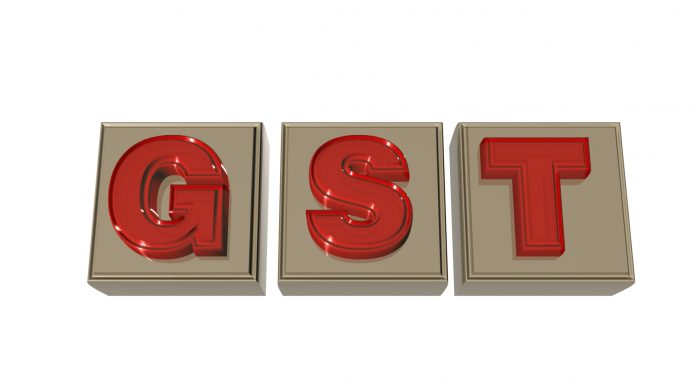This article is edited by Mansi Bathija and written by Lakshay Kumar, a second- year B.A.LLB student of Delhi Metropolitan Education, Indraprastha University. In this article, he talks about the most important change under Goods and Services Tax that is the concept of Input Tax Credit, who all can avail the benefit of input tax credit and claim it.
What is Input Tax Credit ??
So when a producer makes a product, raw materials are required and the producer buys those raw materials and pays the tax on all those raw materials. Later when the entire new output is produced out of that raw material, he can get his tax reduced up to the extent he has already paid, this means that when the new output is made and the producer sells it he does not have to pay the taxes which he has already paid when he bought the raw materials, in general terms it means reducing the tax from inputs from the tax to be paid in total output. For example- if the total tax on the output is 300 and in this cost, the tax paid on input is 100 then the ultimate tax which has to be paid is 200( subtracting the total tax from the tax already paid on inputs i.e 300- 100= 200)
The concept of input tax is not new, it was already present in the economy but post-GST its scope has widened. One thing to be noted here is that input credit tax is not available on all kinds of inputs, every state of the country has different regulations and rules regarding the input tax credit
How to Claim the Input Tax Credit
- The first thing which is absolutely necessary for claiming ITC is the availability of a tax invoice which is issued by the registered dealer.
- The second important condition necessary for ITC is that the proposed recipient of ITC must have received the goods or must have availed the services.
- The third most important thing necessary is that the supplier must have paid the taxes which he charged from the recipient of ITC to the government in cash.
- He should have filed his GST returns periodically.
It is also possible that sometimes the taxes paid on the raw materials are much higher than the tax which is to be paid on sale, in that case, you can claim back the amount , and if the tax on the raw material is lower than tax on output then you have to pay the balance amount back, another important thing to be kept in mind before claiming input tax is that a person can not claim input tax on an invoice which is one year old.
Input tax can be claimed on both the goods and services because GST applies to both goods and services. No input tax is allowed on GST returns filed for September as it marks the end of the financial year.
How to Calculate Input Tax Credit
Suppose you are a manufacturer of steel utensils who sells utensils made up of steel. Let us take an example of a steel pressure cooker. Assume that the GST on the pressure cooker is 18 percent. Now for making a steel pressure cooker, he purchased raw steel for INR 500 and the other raw material used for making pressure cooker for INR 100, the GST on raw steel let’s suppose it be 18 percent and on other raw material let it be 18 percent. So the total tax which the manufacturer has to pay on inputs is 118 ( 18% of 500 + 28% of 100 ).
After making the pressure cooker, the next step is to sell it to the distributor, after taking into consideration the manufacturer decides to sell his pressure cooker at INR 800 + GST i.e 800+144
The total output cost is 944. However the total output tax which the manufacturer has to pay is 144, but since he has already paid INR 118 as input tax, the total tax which he has to pay is 26, this is how the input tax is calculated.
How is Input Tax Utilized
There are three types of tax under Goods and services act first is central goods and services tax, second states goods and services act, and third integrated goods and services tax. Central goods and services tax and state goods and services are applicable to intrastate transactions, whereas on interstate transactions integrated goods and services tax is applicable
For utilizing the input tax the following table must be referred
|
Credit |
1st to be utilized for Payment of |
Balance payment to be paid off |
|
CGST |
CGST |
IGST |
|
IGST |
IGST |
CGST then UTGST |
|
SGST/UTGST |
SGST/UTGST |
IGST |
The New Law Regarding Utilization of Input Tax Credit
The new section inserted under the GST Act is as follows
Section 49A. Notwithstanding anything contained in section 49, the input tax credit on account of central tax, State tax or Union territory tax shall be utilised towards payment of integrated tax, central tax, State tax or Union territory tax, as the case may be, only after the input tax credit available on account of integrated tax has first been utilized fully towards such payment.
Section 49B. Notwithstanding anything contained in this Chapter and subject to the provisions of clause (e) and clause (f) of sub-section (5) of section 49, the Government may, on the recommendations of the Council, prescribe the order and manner of utilisation of the input tax credit on account of integrated tax, central tax, State tax or Union territory tax, as the case may be, towards payment of any such tax. The new law could be understood with the help of the following table :
|
credit |
First to be utilized for payment of |
Balance payment to be paid off if any |
|
IGST |
IGST |
CGST/SGST |
|
CGST |
IGST |
CGST |
|
SGST |
IGST |
SGST |
Impact on business because of the New Law
We can see from the second table that in the case of CGST, even though the credit was available and could have been utilized fully, the new system won’t let you use the same for the set-off. Since CGST credit was not utilized at all, this put an additional burden on the amount of SGST to be paid, as CGST credit cannot be utilized to pay SGST. Further, we can notice that there can arise a possibility of a carry forward of input tax credits of SGST or CGST remaining unutilized during the tax period.
So this affects the working capital of your business as your cash outflow will increase from month to month due to the new rules of set-off.
However, from the Government’s point of view, it is immediate revenue coming in, in the form of cash. Thus, it helps in mobilizing the economy.
Situations when Input Tax Cannot be Claimed (Negative List)
As mentioned above input tax credit is not available on all kinds of input, here are some situations under which you can not claim input tax
- Credit on motor vehicle purchased for personal or office use cannot be used as an input tax credit, however, there are related to it as well, for instance, if the person is in the business of buying or selling second-hand vehicles and is a taxable person then in that case input tax credit can be used
- The second situation under which input tax credit can not be claimed is when a person is providing food and beverages or giving outdoor catering, cosmetic and plastic surgery.
- Rent of a cab or health and life insurance does not come under the ambit of input tax credit.exeption to this rule is that when the government makes it mandatory for the employer to provide a specific facility to its employee under a certain law then in that case the employer can claim input tax credit for providing service, for example when the government makes mandatory for all the offices to provide cabs to its female employee for their travel.
- The fourth situation under which a person can not claim ITC is when a person works for a contract for the construction of some immovable property but if the same person employees some other person in order to engage him in the construction then the first contractor can avail the benefit of input tax credit
- If someone is providing service to a nonresident taxable person then in that case as well he would not be able to claim the benefit of ITC
- Other situations when a person would not be able to claim benefits of ITC are when goods and services are provided for some personal consumption and when some goods are given as gifts then in that case as well ITC cannot be claimed
Rules Regarding Discrepancies and its Rectification
If the supplier has claimed an excess of Input tax credit because of the discrepancies reflected in the return filed by him then in that case the discrepancy must be communicated to the supplier and the recipient, after the notice of discrepancy the supplier has one month time to rectify that discrepancy, upon his failure to do so the credit which was to be claimed, would now be added in the total output tax of the recipient. For example, if the discrepancy has been discovered in the month of July and the supplier fails to rectify it within a month then the input claimed on that return will be added to the total output tax liability of recipient for the month of August
If there is some kind of duplication in claiming ITC, then after the communication of duplication has been made, if that duplication is not resolved then the ITC amount would be added to the output tax liability of the recipient for the month in which such notice was communicated, apart from this the recipient also has to pay an interest of not more than 18% on the total output tax liability
Reclaiming Input Tax Credit
- Reclaiming of input tax credit means that when to reclaim the input tax which was reversed due to the excess input found in the supplier’s return because of some discrepancy in the return filed or because of duplication of ITC. One can only claim the input tax when he is able to declare his invoice details or debit notes in his correct return pertaining to the period when the discrepancy was discovered or when it came to the notice of the supplier.
- If the supplier has already paid the excess interest on the claim of ITC it will be refunded back to him through appropriate means.
- In case the reversal of ITC happened because of duplication in the ITC then no such interest would be refunded as duplication is in itself a violation of the GST provision.
for example – supposing Mr. Kumar filed his GST return for the period of August 2017 in September 2018 and some discrepancies were found in the inward supply up to INR 10,000 of Mr. Kumar’s return. Later on, this information was conveyed to Mr. Kumar and the recipient. If Mr. Kumar fails to correct his discrepancies Then that ITC would be added to the total output tax liability of the recipient and an interest of up to 18 % would also be charged, but if he rectifies his mistake on time then the ITC could be claimed and if some excess interest has already been paid then that would also be refunded.
Conclusion
Input Tax Credit is the most important topic under GST, under this topic we analyze how can a registered taxpayer get his tax to lower down when he has already paid the tax on the inputs. The article analyses how to calculate the input tax credit and how can it be utilized. Along with it in this article, we come to know how the new law came into force as to utilizing the input tax credit on the payment of GST.
 Serato DJ Crack 2025Serato DJ PRO Crack
Serato DJ Crack 2025Serato DJ PRO Crack











 Allow notifications
Allow notifications



